A bad photograph
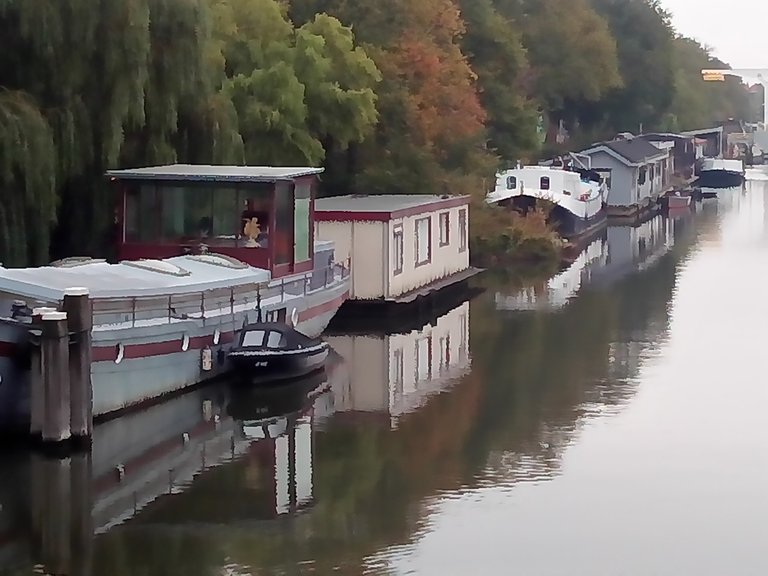
or a good painting!
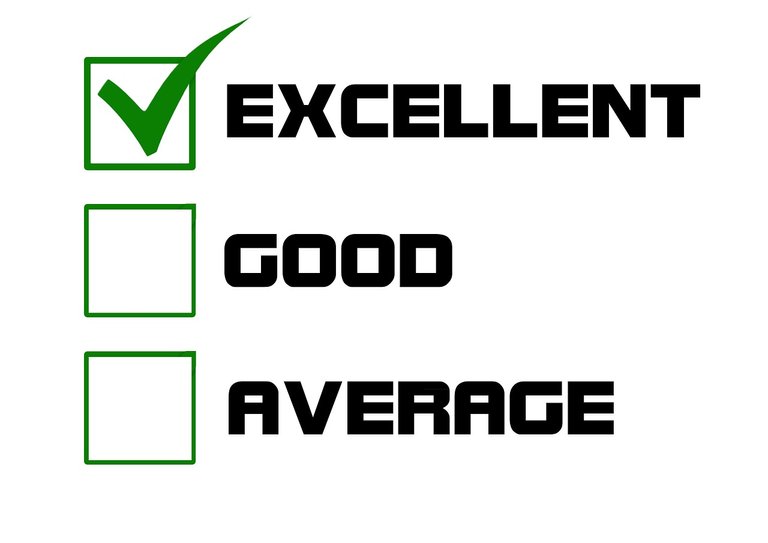.jpg) (1)
(1)
How do you, we, us as a society,
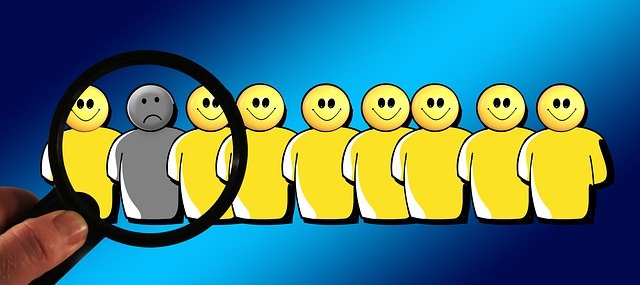 (2)
(2)determine what is good
 (3)
(3)and what is bad?
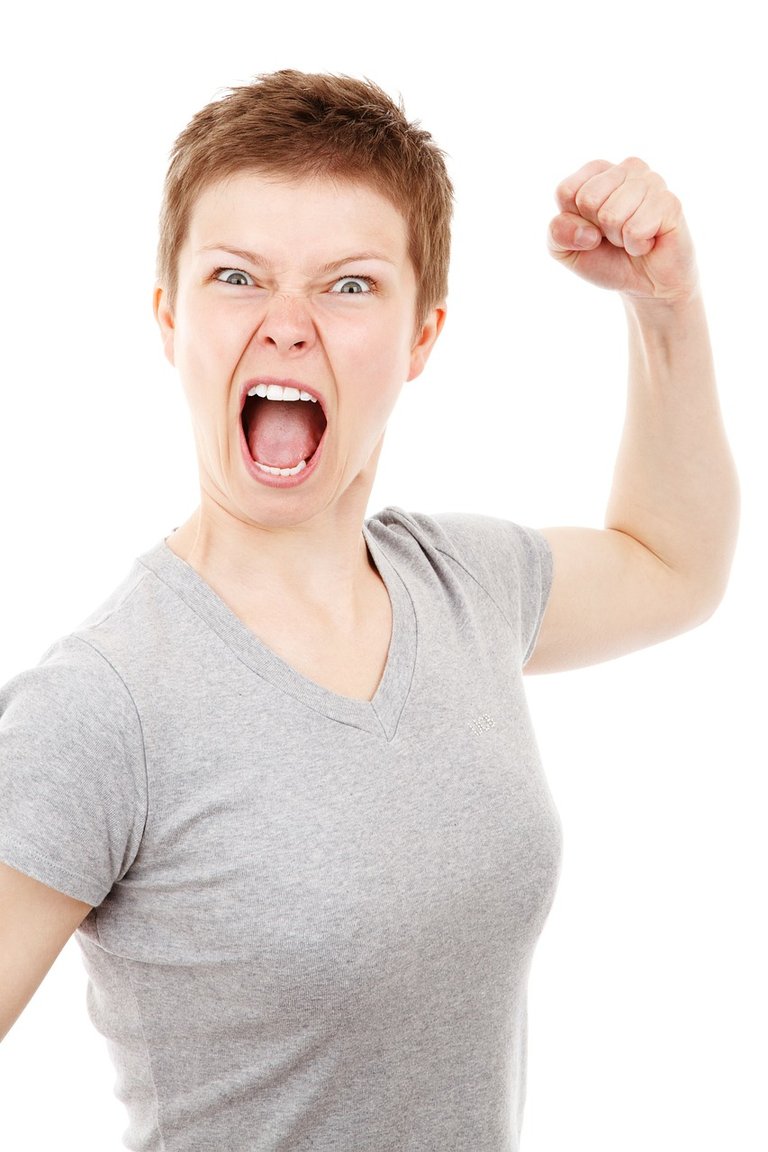 (4)
(4)Tell me what you think. I really want to know!

images(1) to (4)courtesy of pixabay.com
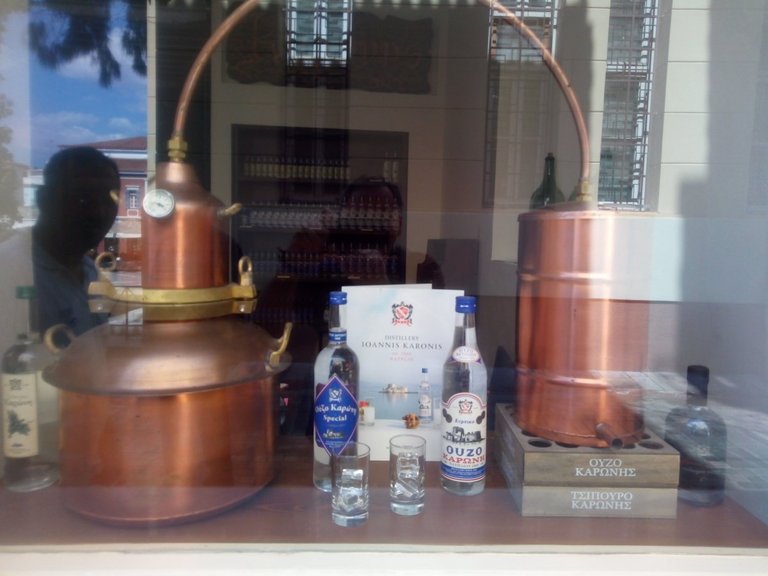
👍
ouzo and out,
There is a plan!
(It's unfolding NOW)
.
.@onceuponatime
https://web.telegram.org/#/im?p=@officialbeos
Please spread the word about BEOS

It's not quite bad photography but I am curious if it will make a good painting. So I ran it by deepdreamgenerator and came up with this.
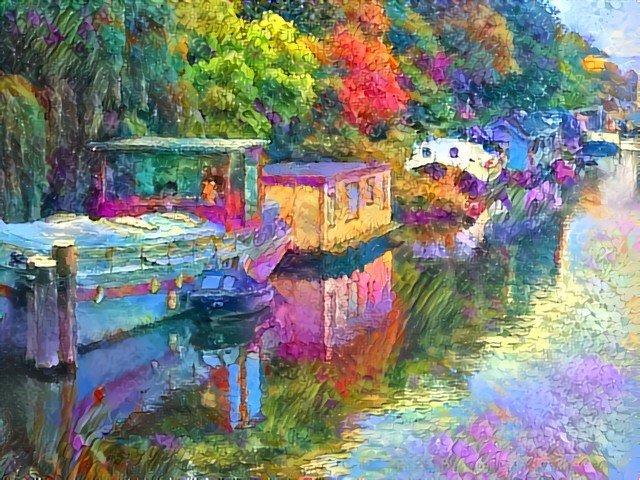
So now it is a painting? And it is "good"? Could the whole process have been done by AI? Was an "artist" really needed? I'm confused :-)
If bad photographs can be turned into good paintings by artificial intelligence.........
I think it's a trap :-)
I believe the platform for deepdreamgenerator is AI driven. Many things don't need humans in the end. Frw years ago i was re-practicing Chinese calligraphy when i saw an ABB robot doing that with 2 hands simultaneously.
I dunno if I'd agree with you that that's a bad photograph, if it is one. If one looks at the beautiful works of Christopher Dydyk, and other fine-art photographers, whose photographs are more like impressionist paintings than classical photography, one can see that the distortion of these boundaries is something that yields stylistically unconventional photographs which are conventionally aesthetically pleasing--or maybe that's just me.
Maybe in terms of good/bad you're talking about some skill level? Impressionist painting is a difficult skill and a photograph can be composed by one click, but that leaves the realm of aesthetics and approaches the topic from skill.
Or perhaps human value of the aesthetic is, in part, derived from skill; that is to say, perhaps due to supply/demand exchange value under the capitalist mode of production there is the construction of value such that perceived aesthetic value is correlated with price. Maybe this ties into the more postmodernist idea of sign value.
Just some thoughts.
The ability to provide that visual as a painting is rare I assume. The ability to create the very same visual to a perceiver with a good enough camera depends mainly on your ability to afford the camera. The visual provided to the viewer is practically indistinguishable. It seems that technology, especially AI, is going to greatly diminish the value of many skills. I wonder which ones will remain valuable?
I mean, one route--the most depressing of all--would be the absolute disintegration of the human proclivity to value art. I doubt this, though; even with the use of technology, innovations will always come and therefore be able to distance themselves from others and create sign value. Even if this sign value is produced by AI, it still exists (as much as sign value of art produced by another human). I suppose here is a situation where death of the author comes in handy!
And regarding cost/skill difference, I'd argue that in photography there's a different type of skill. A photographer has to find some scene such that the image has good composition and the likely uncountable other elements that go into a photograph (or at least an aesthetically pleasing one by common standards). Not to mention that the more money one invests in painting, the easier it is to paint. Paintbrushes, for instance, are a perfect example of this. Also, having all the colours you'd even need removes the skill element of colour mixing, too, so in a number of regards the ability to produce "good" paintings is contingent upon expensive tools, too. Both media have similar but incomparable elements of skill and, to some extent, cost (cost is comparable in the sense that it's a linear value that can be compared, but how that converts into art is dependent upon other things, also).
"the absolute disintegration of the human proclivity to value art" from any standard beyond pretentiousness is pretty far along already, wouldn't you say?
My theory:
Looks actually like a Bad Quality photo, does not mean it's a bad photo. Looks like it's taken with a phone or a digital camera with software zoom not optical zoom. It can be through a glass that it's not that clear or even a not-good/blurry lens, the reflection in the water it's pretty realistic, does not mean that painters aren't capable or replicating this water realism but it looks pretty photo-ish to me.
It's blurry especially on the borders, and not sharp at all. It's not that grainy because there's plenty of light, but we can see noise in the overall photo in the colors and the light of the picture. I downloaded the picture and ran it through affinity photo with noise reduction in color and luminance, and sharpened a litte, this way looks more like a bad quality-filtery-photo.
I'm not sure. Maybe your version looks even more like a good painting. It would take quite a lot of skill to paint that.
Maybe, i agree. Actually i follow a few amazing realism painters that make me cuestion the photo. But my theory comes from some test i made with DSLR and phone cameras, and i found it more leaned to a bad quality photo. But again, yes, that's why it's just a theory.
I would like to think there is one ultimate truth that was laid out for us by our creator that expresses what is good and bad. Sadly man has tried to offer multiple interpretations of it and water it down where each person has his or her own truth or belief. We have strayed from the original compass of good and bad. Thanks.
You would "like to think" that because it brings you peace, because it absolves you from responsibility of making your own decisions, because that is what you were told by an authority figure, because it came to you in a dream, because of your interpretation of what the Bible is saying, or why exactly?
And from the perspective of what you like to think, are you able to determine whether the first image in the post is a bad photograph or a good paintng? If so, how?
Definitely a great painting in my view!@onceuponatime,
Cheers~
But what if it is not a painting? After all, it might be a photograph. It could even be a photograph of a painting (or a painting of a photograph). So is it "good", or is it "bad"?
Well, also the answer to this question could be good or bad. It's not a simple question and I think the right answer doesn't exist. Maybe everything is relative, but about life I like to think if something is good for me and it doesn't hurt anyone, that's a good thing. 😊
Posted using Partiko Android
Wow. I have gone to jail before for things that are good for me and don't hurt anyone!
You really should tell us that story one of these days!
It's for sale to the highest bidder :-)
To my mind, I like symmetry or geometric type of images. However I have to say sometimes a black and white minimalist photo can be as, if not more, compelling than a flasy and overly busy piece.
Great question BTW.
Now theres a question! It is all relative isn't it? The individual, the collective and above. I would normally be tempted to give the answer a bash but I am drinking beer and fear my answer would be poor! :OD
Does that make beer good? or bad?
Haha!! Nicely done! :O)
Always good! Well, except for the bad. Oh no, I am caught in a loop!
I was caught in an elevator once (without any beer! Oh no!)
That sounds frankly horrifying!! Which is why I always have an emergency six pack elevator kit with me!
You must have been either a boy scout or a girl guide in drag :-)
A good scout!!
Being good is stupid. Being bad is smart.🤡😇🤑🤩🥂
I suppose that depends a lot on how you define "good" and "bad". If you define "good" as whatever moves you towards your goal or aim, then being "good" is probably smart and being "bad" is a meaningless waste of your time and energy.
I love water and I love photos of water , reflections and so paintings of water too. I like this as a photo I don’t think it’s bad in the slightest. If it were a painting it would be amazing- win win for me because water is one of my greatest loves ❤️
You're easy to please :-)
we are talking about moral good and moral bad?
If yes i think in terms of society moral good is everything that maximizes the well being and advancement of the community without hurting anyone. The opposite is moral bad.
Unfortunately, it has been my experience that it is hard to come to a consensus on what "maximizes the well being and advancement of the community" and, interestingly enough, not everyone can even agree on what "hurts anyone".
i think it's not that hard to come to a consensus because deep down or with just a little bit of research we can all agree in some things regarding our well being. For example we know that the use of oils,gasoline and stuff isn't the most healthy thing both for the environment and ourselves but it helped us come into this point. Renewable energy is much healthier and ofc renewable but the issue lies in our current technology. In order to come at an equal level of energy as that of the ones we currently have we need land that we currently don't have :P. Thus we need (and it's happening day after day) to make this tech more advanced. The same can apply to mostly everything.
Now the main reason people may not agree isn't that they don't understand it but because they are greedy and want more for themselves which morally is bad. It's even bad for the health cause we are beings that can't deal with loneliness scientifically. We are since our beginnings in the need of companionship and unity cause simply we would be dead :p.
Now as far as it concerns the "hurt anyone" i will both agree and disagree if that makes sense :P we can both agree to an extent when the "hurt anyone" translates physically without their consent. The psychological aspect is a little bit tricky but in most of the cases when we have people that openly say how their feelings got hurt we are talking about feminists and all this kind of stuff :P Still, it's a very tricky part and i don't have a generic solution to that, i think it depends the case.
We always been asking "bad foto (photo) or good painting" in these ages, but we've never been asking:
- "How is the set of pixels asked as a bad foto or good painting feeling like today?"
- "Why is it the way it is?"
- "Is it either actually a photoshopped set of items rearranged to look like this to where we can ask if it is x or y, or it is actually a set of pixels meant to fool us and really it is spaghetti?"
- "What are the categories of which we can determine if something is good or bad, and whether a blurry-pixelated picture really is bad or an mock-impressionist painting really is good?"
#theunansweredquestionsofphilosophythatitchoosestoignoreCome on. Let's just start with "bad photo or good painting". Once we get our sea legs on that, we can go on to the important stuff (ie. "what's for dinner?")
Hmm, well how can we figure out if it really is a painting or photo to begin with. For all we know, the creator of the item displayed may have been at one point a picture that lead up to a painting and then a picture turned into a frame. So we got all this mess to deal with.
But if it is a photo, doesn't seem bad but unfocused and blurry - there's no way I can say it's good or bad without knowing if the camera was taken while still or a running boat, vehicle, bicycle. Even then, we haven't a clue of when the camera was made or the model used - further complicating the hard and fast lines of good and bad photography. But to simplify: if used by a modern camera while still, it's an unfocused bad picture; if it's an old camera while still, get a new camera; if modern but on the move, good that it can even capture the detail caught; if an old but on the move, well that camera certainly is beefy.
If a painting, I must say the artistry for the impression is certainly really there; going so far as to even capture the reflection which usually impressionistic art cares not that much for. In terms of impressionist arts, it is good for sure; yet for things like realism, they certainly could've had a smaller brush for more refined details. As for things like post-impressionism it has a certain too much realism for such, then again it certainly wouldn't falter by a huge much and would still be a good post-impressionist piece. But categories be damned.
(Now in, let's get our sea legs dipped further and let's ask if Socrates was the one taking the photo or it was Sun Tzu riding on horseback taking the picture or some other stranger.)
So it seems that it does matter to you whether it is a photograph or a painting. Hence "good" or "bad" as a piece of art are not determinable without further information beyond just viewing the piece itself?
I never had implied that to me, myself and I that it didn’t matter, I just didn’t care to say whether the presentation of was either “bad photo or good painting?” and the subsequent field of explaining why.
All we do when we say “good” or “bad” in context of paintings is critiquing the presentation of a work. Even in a void with our human body and the art piece itself being present, we would still critique what we see in it and not a hundred percent of it. If I were to materially ground us all, we would use the biases of others that came before us, a probable museum curator’s words and the knowledge of any given field to critique yet still the presentation of such, but in the broader scope of material reality.
For what serves as good or bad art, in the material world at this point of history, is dependent if it represents well its related field of art, and it also reflects the author and society in such in some capacity.
Some people say that there is such a thing as "Objective" art - a work that conveys what the artist intended to convey rather than what each viewer experiences differently depending upon their subjective emotional reaction to it. Isn't "feng shui" predicated upon a similar concept? https://en.wikipedia.org/wiki/Feng_shui
Well if people define “Objective” art like that, they would by necessity of their definition must put “Subjective” right before it. That or rename it to (to steal a philosophical term from moral-ethics philosophy) “Target-centered” Art. Because even if there are objective elements like the scenery, shapes, lines or objects (hue), it’s still being heavily mediated in the Subjective realms of both society and the artist who’s labourint their ærses there. So better it be “Target-centered” Art in, say, the philosophy of Æsthetics than this misnomer of “Objective” art.
And so I wouldn’t prescribe to “Objective/Target-centered” Art since it does allow a paradox (can’t remember if this is a Veridical or Falsidical) in which the Artist is looking for a multiplicity, or even duplicity, of interpretations and yet it is at the same time what the artist intended to convey. (That being the discussion around the piece as the focal point of discussion.) Now that paradox varies in degrees, whether it is for a multiplicity of opinions/interpretations on a singular subject to all the way on what the actual peck a piece is supposed to be.
Hell, we don’t necessarily exactly, precisely and accurately know why the Mona Lisa was painted except it was a patronage art piece. Yet what did Leonardo Da Vinci and the patron agreed upon for the exact purpose for it, and what was Leonardo Da Vinci thinking when he hadn’t finished but was about to finish the Mona Lisa. We got the major concepts done of, as aforementioned, a portrait in some generic Italian landscape that served to glamorize Mona Lisa. Yet the question of why it wasn’t finished still remains (but that has been answered by now I bet). Let’s even look to Tamati Waka Nene, an art piece made of an Maori chief way after the Chief died and based upon folk description and an old black-n-white photo of the chief. We know it was a patron piece and it definitely highlighted the Maori culture, yet that’s about it when it comes to the historical record as that it could be it or we haven’t truly seen any other influential biases which could’ve went in to make this masterpiece artwork.
So I fall more in the camp of “Subjective-Objective” Art as to not only alleviate the paradox mentioned earlier but to also give some wide berth for Subjective interpretations along with the Objective Material World to creep in as well. Not for some grand, wholesome theory of everything but as a means to point out the very messy World we live in and how much of a soup it really is.
Otherwise, I never heard of Feng Shui, so I will admit ignorance here. But if the wiki article reports Feng Shui as it was, I don’t necessarily think the same predicates follow here in this discussion.
who am I?? where am I going?.... I think this question has no answer... :)
Who asked?
I ask! I present your question like my own!! There is no answer :)
The answer lies within the question.
great photography
I guess so, if you say so :-)
I think its a digital painting of a picture.